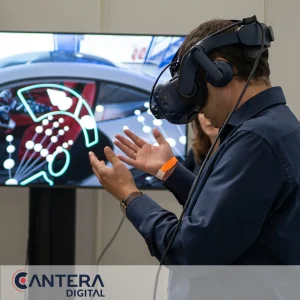
Digital transformation in education: key trends and technologies for 2025.
1 August, 2024The world of IT development is constantly evolving, as the demand for a while has been imperative, driven by technological advances that redefine how applications are created, managed and experienced. Notable trends include the adoption of application management technologies, cloud-native application development, and the growing popularity of augmented reality (AR) and virtual reality (VR) to create immersive experiences.
Adoption of orchestration technologies for application management.
The orchestration of such technologies has emerged as a crucial tool for efficient and scalable application management in modern IT environments. Led by platforms that enable organizations to automate application deployment, scaling, and operation. This is especially important in a context where applications and solutions are being fragmented into microservices, each of which must be managed and coordinated efficiently.
Orchestration should also promote operational efficiency by enabling applications in multiple environments, from on-premises servers to public and private clouds. This not only improves flexibility, but also optimizes the use of resources, resulting in reduced costs and greater agility to respond to changes in business needs.

Development of native applications in the cloud and its impact on scalability and flexibility.
Cloud-native application development is a trend that is rapidly gaining traction, given its positive impact on scalability and flexibility. Cloud-native applications are specifically designed to take full advantage of the features and benefits of the cloud computing environment, such as elasticity, auto-scaling, and managed services.
One of the main advantages of cloud-native applications is their ability to automatically scale in response to demand. This statement implies that applications can increase or decrease their ability based on user traffic, ensuring optimal
performance without wasting resources. This approach not only improves the user experience but also allows organizations to optimize their operating costs.
Additionally, cloud-native applications are inherently more flexible than traditional applications. They are designed using microservices architectures, where each application component is independent and can be developed, deployed and scaled autonomously. This modularity allows you to update functionalities, integrate new technologies and quickly adapt to changing market needs.

The rise of application development with augmented and virtual reality for immersive experiences.
Augmented reality (AR) and virtual reality (VR) are emerging as disruptive technologies that are transforming the way we interact with applications and digital content. These technologies are being adopted across a wide range of industries, from entertainment to education, healthcare and retail, creating new opportunities for immersive experiences.
In education, these technologies are being used to create interactive learning environments, where students can explore complex concepts in a safe and controlled environment. In retail, AR is changing the way consumers interact with products. Retailers are developing apps that allow customers to visualize how furniture would look in their homes or try on clothes virtually before making a purchase. This improves the customer experience and reduces return rates, increasing satisfaction and sales. How will each industry change if we rely on all these new technologies firmly and constantly? It is something that without a doubt we cannot miss.
The only constant is change. – Heraclitus.



